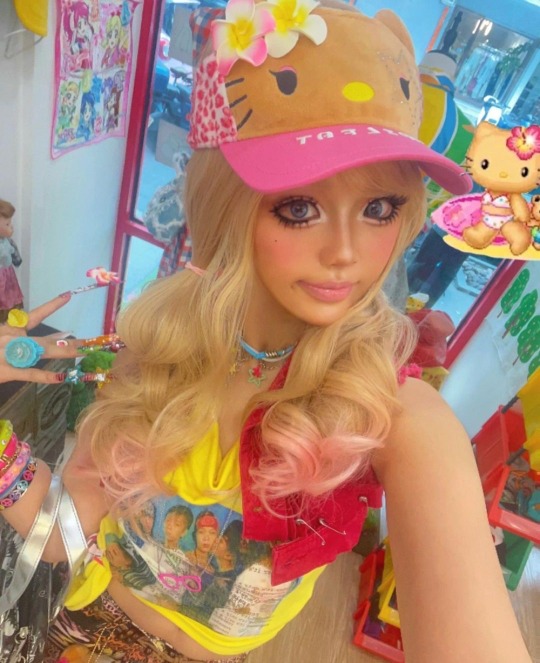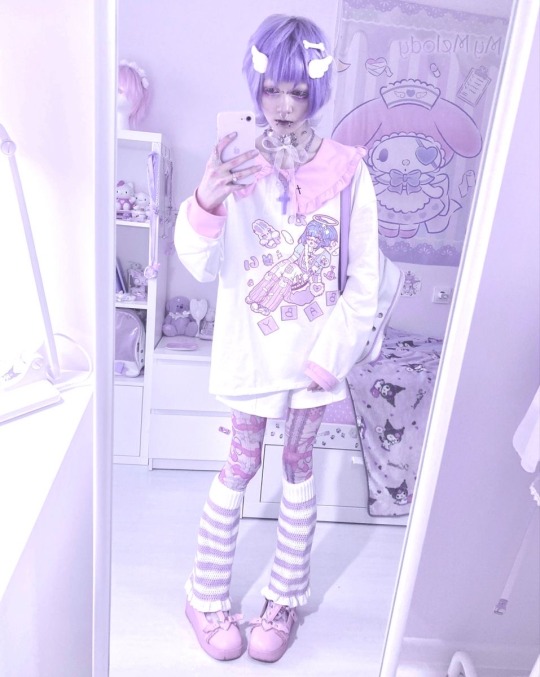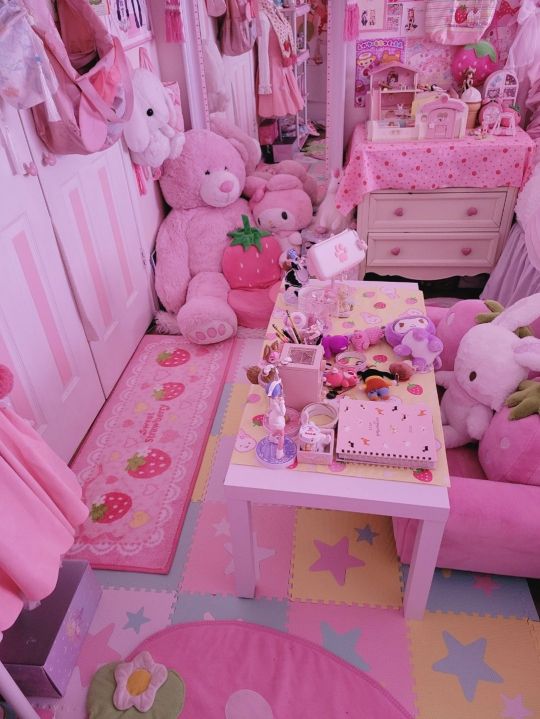Text

credits: @/vo1dchan on instagram (account is no longer active)
#kawaii#jfashion#kawaii blog#kawaiicore#cute#japan#jojifuku#kawaii kei#pink#sanriocore#cute gore#gurokawaii#soft guro
20 notes
·
View notes
Text
Credits: @/gummypuppie on tiktok!
Song in video is 18 by code red!
#fairy kei#jfashion#harajuku#harajuku fashion#kawaii fashion#yumekawaii#yume kawaii#kawaii blog#kawaii#pastel fashion#kandi kid
1 note
·
View note
Text

credit: Shirousa0999 on instagram
#jfashion#kawaii#kawaii blog#kawaiicore#cute#japan#jojifuku#kawaii kei#pink#sanriocore#nostalgia#babycore#baby pink#pink aesthetic#pinkcore#strawberry#cutecore
124 notes
·
View notes
Text

credit: kurohalo777 on pinterest.
53 notes
·
View notes
Text

#jfashion#cute#japan#pink#tropical#gyaru fashion#gyaru gal#gyarustyle#gyaru makeup#gyaru#gyaru magazine
21 notes
·
View notes
Text

Credits: Xoogie_kwisp on IG
#decora kei#decora#jfashion#harajuku#harajuku fashion#japanese fashion#japan#kawaii blog#cute#blue#baby blue#accessorizewithstyle#express yourself
30 notes
·
View notes
Text

20 notes
·
View notes
Text

#menhera chan#menhera#yami kawaii#yamikawaii#yandere#mental health#mental illness#outfit#outfit inspo#jfashion#japanese fashion#japan
120 notes
·
View notes
Text

Credits: @/himedollie on instagram
#cute#japan#jfashion#jojifuku#kawaii aesthetic#kawaii kei#kawaii blog#kawaii#kawaiicore#cutecore#baby pink#pink#pink aesthetic#babycore
44 notes
·
View notes
Text

#cute#japan#cutecore#room#roomspo#room inspo#baby pink#pink aesthetic#pink#kawaii kei#kawaii blog#kawaii#kawaiicore#jojifuku#moecore#sanriocore#pinkcore#light pink#stars
145 notes
·
View notes
Text

#kawaiicore#cute aesthetic#kawaii#kawaii kei#kawaii blog#babycore#kawaii aesthetic#pink aesthetic#cutecore#cute#pink#mezzo piano
30 notes
·
View notes
Text

☆little twin stars cardigan☆
so cute i want this soooo badT-T
1K notes
·
View notes
Text
Lists of J-fashion or styles/subcultures that I post about.
Jojifuku: Translating to "girls' clothes", jojifuku often refers to a Harajuku fashion born of childhood nostalgia for the Heisei era. Rising to popularity in the 2010s, jojifuku didn't spend long in the spotlight. Due to a lack of size inclusivity, and an NSFW studio opening with the jojifuku SNS tag for a name, jojifuku has dwindled- but isn't dead! Jojifuku is not inherently NSFW but is instead a result of fulfilling childhood yearnings for cute clothes advertised in manga magazines like Nakayoshi. People tend not to use the term, "Jojifuku" anymore but now call it "kawaii-kei". It is also known as "cutecore", "kawaiicore", or "sanriocore". This style was very much inspired by Fairy Kei and Yume Kawaii, hence why they get mixed up.
Yume Kawaii: This aesthetic originated in 2013, it centers around fantasy themes in pastel colors. It appears like the embodiment of a “girl's dream” and you can find many illustrations, clothing, and goods, which incorporate this aesthetic. Due to the nature of dreams, it can also feature nightmarish elements. This tends to get mixed up with Jojifuku.
Yami Kawaii: This is an aesthetic that is inspired by Yume Kawaii and is also what people would say is the complete opposite of Yume Kawaii, which means it has a stronger emphasis on dark themes and colors. As the term can also be used as an adjective, its interpretation can vary a lot depending on the context as a character being described as Yami Kawaii can simply refer to their personality being dark and cute without visually representing the aesthetic. Yami Kawaii originated in the mid-2010s, it is also known as "Menhera". Which created the popular character Menhera-Chan. This aesthetic is common within mental health and mental illness.
Jirai Kei: This is another style that is associated with mental health/mental illness. Jirai Kei, which translates to "landmine type", is a subculture and aesthetic originating from Japan that is heavily based on the teens hanging out in the nightlife of Kabukicho. During the height of its popularity it highly resembled Japanese Girly fashion, the edgier variants of it in particular, but has since moved on to integrate a broader variety of styles. This style originated in 2020 and consists of muted pink, black, and gray.
Fairy Kei: A Japanese fashion based on children's pop culture from the 80s. As the name suggests, it is characterized by a pastel color palette as well as a fluffy or floaty appearance. When not referring to the fashion on its own, the term "fancy" (ファンシー) is commonly used within Japan to describe its nostalgic aesthetic.
If you would like to learn more about these styles, subcultures, etc. You can find more about them here.
#jfashion#harajuku#harajuku fashion#japanese fashion#jojifuku#yume kawaii#fairy kei#yami kawaii#menhera#menhera chan#yumekawaii#yamikawaii#cutecore#kawaii#kawaiicore#kawaii kei#jirai kei#landmine girl#landmine type
5 notes
·
View notes
Text

13 notes
·
View notes
Text

6 notes
·
View notes
Text

466 notes
·
View notes